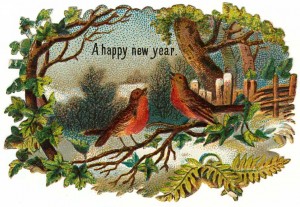 This year is winding up just like last year began – cold and snowy. An early Naturalist’s Corner from last January was “Birrrrrding the big chill.”
This year is winding up just like last year began – cold and snowy. An early Naturalist’s Corner from last January was “Birrrrrding the big chill.”
“The annual Balsam Christmas Bird Count was scheduled for last Saturday (Jan. 2). However, scary weather conditions — snow, high winds and temperatures in the low teens — especially in the northern count area, caused the count to be canceled.”
The weather for this year’s count on Jan. 1 looks to be much better – chance of rain but temps in the 50s.
Snow continued to be a theme through last winter with one of my favorite columns – learning about diamond dust – “A snowflake by any other name.” And February’s “Snow Day.”
March noted a mature bald eagle that spent a month or so hanging around Lake Junaluska plus a head’s up regarding White Nose Syndrome (a fungus that is decimating bat populations) inching closer to the state.
April’s Earth Day Naturalist’s Corner highlighted an article written by Waynesville half-timer Chuck Dayton. “It is a great read by one who was inspired by Earth Day and dedicated his career to the environment.”
The column is still online at www.conservationminnesota.org/news/?id=4729.
May found, “Murky waters – Louisiana in limbo.” “The giant oil slick (reported to be the size of Puerto Rico) sliding around in the Gulf of Mexico like bacon grease on a George Foreman grill tied to the back of an alligator is once again sliming its way toward a Louisiana landfall.”
June provided a great trip with my then, four-year-old daughter Maddie. We discovered “A kaleidoscope adventure” at Harmon’s Den. We found at least seven species of butterflies (in good numbers) all puddling together.
During our annual July Fourth trip to Rock Hill to visit my sister, my family and I stumbled onto Glencairn Gardens and prompted this column “Green spaces – good places.”
“When we entered Glencairn, we walked into a space that was clearly 6 to 8 degrees cooler than the heat that was building along the asphalt and concrete of downtown. The air was fresher – green plants are amazing air purifiers and there was even a calming noise reduction from the nearby thoroughfares. Some environmental benefits of urban green spaces include, enhanced public health, wildlife sanctuary, pollution mitigation, storm runoff reduction, environmental education and community building.”
September brought mixed emotions with “North Carolina’s loss – Louisiana’s gain” as Chris Canfield, executive director of Audubon North Carolina stepped down to become Vice President, Gulf of Mexico Conservation and Restoration to help with the work of restoring and protecting Gulf of Mexico habitat and wildlife in the wake of BP’s massive oil spill.
November brought news of the impending protection of 8,000 acres in Transylvania County as the Carolina Mountain Land Conservancy and partners worked to broker a deal with former congressman Charles Taylor to purchase the East Fork Headwaters tract.
A December email from Ida Phillips of Audubon North Carolina noted that a generous donation from Fred and Alice Stanback had made possible the protection of Lea Island, one of North Carolina’s barrier islands. That news prompted “A heartfelt thanks to the Stanbacks.”
“Fred and Alice Stanback have been instrumental in preserving tracts like Needmore, Mount Lyn Lowry, Lands Creek Watershed, Chimney Rock, Jocassee Gorges, the East Fork Headwaters tract and so many more. They have donated to organizations like Friends of The Smokies, the American Chestnut Foundation and National Parks and Conservation Association just to name a few.”
Now, let me close that window – the snow is blowing in again and who knows what will blow through the Naturalist’s Corner in 2011?
Happy New Year!
